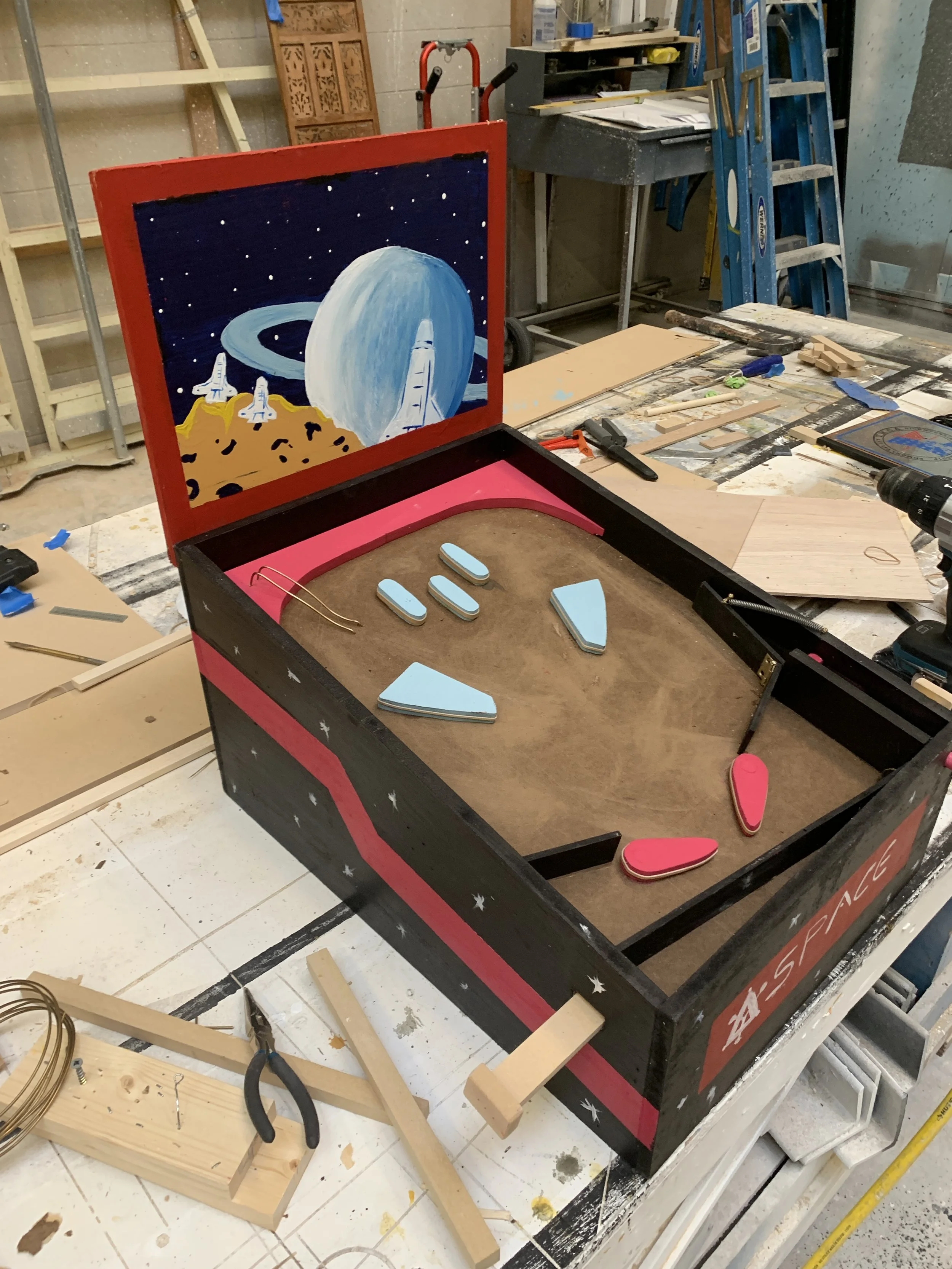Pinball Machine
During my first semester of college, I took a stage craft class, where we regularly developed our woodworking and scenic painting skills. For our final project, the task was to build any sort of prop, but the catch was it had to work. Eager to impress my professor, which eventually led to my employment in the scene shop, I chose a pinball machine!
Build Process
The most important part of this build was making sure I was able to figure out the actual pinball mechanism, which would rotate the pegs when the levers were pushed in. I played around with a lot of different designs, but the main issue was finding how to make the pinball levers push out again after pushing them in. I finally settled on a design after a lot of trial and error, which worked reliably and used rubber bands as a passive way to reset the mechanism after every “push”.
After successfully devising the paddle mechanism for the machine, the remainder of the construction process unfolded smoothly. I proceeded to craft a sturdy frame for the body, incorporating a lip around the edge to accommodate a face featuring the paddle mechanism. Additionally, I fashioned wooden inserts for the machine's face to act as "obstacles" for the pinball. These inserts were enveloped in additional rubber bands to replicate the bouncing of the pinball seen in actual machines.
The last moving component of the machine was the ball launcher. I first created chute for the ball and made a wooden launcher equipped with a spring mechanism. To finish up the project, I designed a backboard for the machine. Sticking to the retro space theme, I painted a piece of wood with a space graphic and affixed it to the body using of glues and nails.








